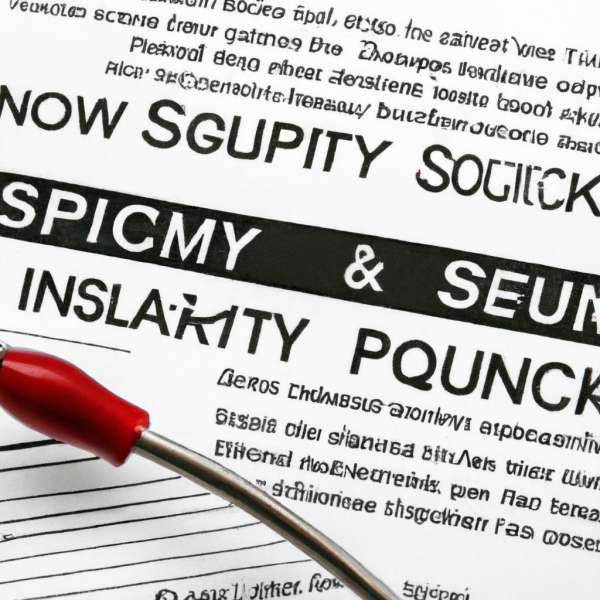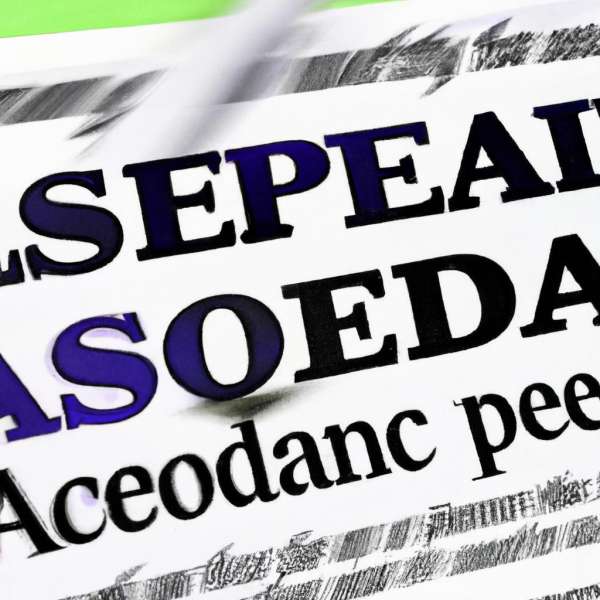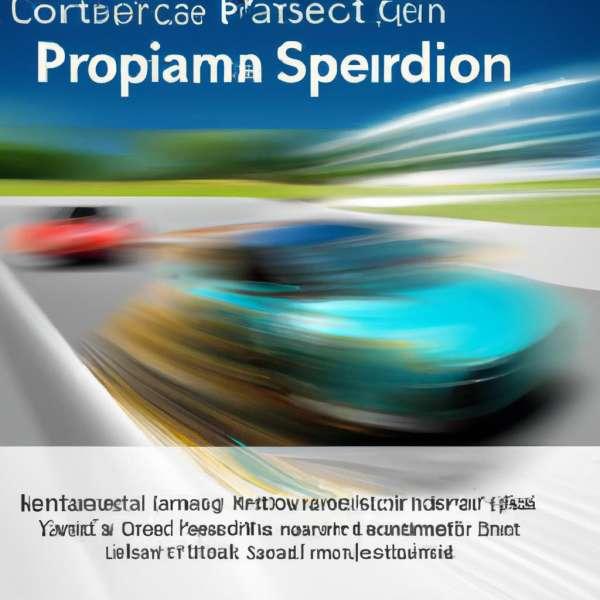Title: The Influence of Speeding on Personal Injury Claims
In today’s fast-paced society, the allure of driving fast often eclipses the need for caution. On busy streets and expansive highways, a momentary decision to exceed the speed limit can have far-reaching consequences, turning a fleeting thrill into a potentially life-changing incident. While some may dismiss speeding as a minor offense or a trivial part of their daily commute, the reality is that it has significant repercussions, especially when accidents happen. This article delves into the complex relationship between speeding and personal injury claims, highlighting how this common behavior impacts legal processes, the experiences of victims, and overall road safety. Join us as we explore the intricate dynamics of speed, liability, and the quest for justice in a world where every second matters.
The Relationship Between Speeding and Personal Injury Claims
Accidents caused by speeding often result in a tangled web of legal consequences. Speeding not only heightens the risk of an accident but also amplifies the severity of injuries incurred. When a driver surpasses speed limits, their ability to respond to unexpected obstacles is significantly reduced, leading to devastating collisions. This is particularly crucial in personal injury claims, where establishing causation and liability is vital. Demonstrating a direct link between speeding and the injuries sustained can greatly strengthen a claimant’s case.
Grasping the layers of responsibility involved is essential. Consider the following factors that frequently come into play in these cases:
- Driver Negligence: A driver who speeds may be deemed negligent, leading to liability for damages.
- Increased Injury Severity: Higher speeds generally correlate with more severe injuries, impacting compensation amounts.
- Evidence Collection: Traffic cameras, witness statements, and police reports can corroborate claims of speeding.
The legal consequences of speeding extend beyond the immediate aftermath of an accident. **Insurance companies and juries often perceive speeding as a blatant disregard for safety**, which can result in harsher judgments against the speeding driver. In a personal injury claim, this perception can significantly influence the outcome, as the injured party may be entitled to greater compensation for medical expenses, lost wages, and pain and suffering.
| Speeding Impact | Consequences |
|---|---|
| Increased Impact Force | Higher severity of injuries |
| Faster Reaction Time Needed | Increased likelihood of collision |
| Legal Liability | Potential for punitive damages |
Ultimately, the connection between speeding and personal injury claims is a multifaceted issue that underscores the necessity for safe driving practices. Understanding these dynamics can lead to more informed decisions whether you find yourself on the road or navigating the legal landscape following an accident.

The Legal Consequences of Speeding in Accident Scenarios
Speeding can significantly alter the course of personal injury claims in accident scenarios. When a driver exceeds the speed limit, the act not only breaches traffic laws but can also establish a legal presumption of negligence. This negligence may be crucial in determining liability during an accident investigation, potentially leading to substantial financial repercussions for the at-fault driver.
In many jurisdictions, proving that a driver was speeding can help establish fault and support the injured party’s claims. Some critical aspects that courts may consider include:
- Evidence of Speeding: This can include radar or laser speed detection, witness testimonies, and photographs of the scene.
- Impact of Speed: The higher the speed, the greater the potential for severe injury.
- Shared Fault: When both parties are partially responsible, the extent of speeding can influence the damage awards.
leading to increased damages claims.
For drivers involved in legal disputes following a speeding-related accident, it is crucial to understand the potential penalties they might face:
| Type of Liability | Common Consequences |
|---|---|
| Negligence | Compensatory damages for injuries, property damage, medical expenses |
| Reckless Driving | Punitive damages, higher insurance premiums, potential criminal charges |
| License Suspension | Temporary loss of driving privileges, points on driving record |
The complexities of liability in speeding-related accidents highlight the importance of gathering comprehensive evidence and securing legal representation. A well-prepared case can substantiate claims of negligence and advise on the potential repercussions of speeding, ensuring that affected individuals navigate their claims successfully.

Assessing the Long-Term Impact of Speeding on Victims and Claimants
Speeding is a significant factor that often leads to devastating outcomes for victims and their families. When accidents occur due to excessive speed, the consequences extend far beyond immediate physical injuries. Victims may face long-term repercussions that can fundamentally alter their quality of life. These effects are not only physical but also emotional, psychological, and financial, creating a complex web of challenges.
Victims of speeding-related accidents commonly experience:
- Chronic Pain: Many individuals suffer from lasting physical injuries that lead to persistent pain, affecting their daily activities and overall enjoyment of life.
- Emotional Distress: The trauma associated with severe accidents can result in conditions such as PTSD, anxiety, and depression, requiring ongoing treatment.
- Financial Strain: Medical bills, lost income due to inability to work, and additional living expenses can pile up, placing significant stress on victims and their families.
For claimants seeking compensation, the long-term ramifications of speeding pose unique challenges during legal proceedings. It is critical for legal representatives to comprehensively assess the full extent of damages incurred. This involves evaluating both immediate and future needs of the victim, taking into account various factors that may influence their compensation claim:
| Factor | Description |
|---|---|
| Medical Expenses | Both current and future healthcare costs associated with treatment and rehabilitation. |
| Lost Wages | Estimated income lost due to inability to work, including long-term disability estimates. |
| Pain and Suffering | Non-economic damages reflecting the victim’s quality of life detriments. |
Furthermore, the emotional and psychological burden that victims endure also necessitates a thorough analysis. Lawyers should consider the input of mental health professionals to appropriately quantify the impact on the victim’s life and the trajectory of their recovery journey. In navigating these complex variables, a well-rounded approach ensures that claimants receive fair compensation that reflects the reality of their long-lasting suffering caused by the reckless act of speeding.

Effective Strategies for Handling Claims Involving Speed-Related Accidents
Managing claims that arise from speed-related accidents can be a complex and often daunting task. Successful handling of these cases typically involves a thorough understanding of both the law and
The specific details surrounding the incident are crucial. Here are some best practices to enhance the effectiveness of your approach in these claims.
Gather Extensive Evidence:
- Photograph the Scene: Capture clear images of the accident location, vehicle damage, and any pertinent traffic signs or signals.
- Collect Witness Accounts: Obtain contact information and statements from individuals who saw the crash. Their testimonies can provide essential context.
- Secure Police Reports: Request a copy of the accident report; it often includes critical details such as the determination of fault based on speeding.
Understand the Legal Context:
- Review Local Speeding Laws: Familiarize yourself with specific speeding regulations in your area. Understand how violations may impact liability.
- Consider Comparative Negligence: Many states follow comparative negligence rules. Understand how your state allocates fault and how that might affect compensation.
The following table illustrates the relationship between speeding violations and potential impacts on claims:
| Speeding Violation | Potential Impact on Claim |
|---|---|
| Exceeding the Speed Limit | Increased liability for damages |
| Driving Too Fast for Conditions | May affect compensation based on environmental factors |
| Reckless Driving | Potential for punitive damages in severe cases |
Seek Professional Advice:
- Consult an Attorney: Seek guidance from a personal injury attorney experienced in speed-related cases. They can provide insight into local laws and claim strategies.
- Work with Accident Reconstruction Experts: These specialists can help clarify circumstances surrounding the accident and support your case with technical expertise.
By following these best practices, you position yourself better to navigate the complexities of claims involving speed-related accidents effectively. A clear strategy increases the likelihood of achieving a favorable outcome.
Insights and Conclusions
As we navigate the complex pathways of personal injury claims, the impact of speeding becomes increasingly significant, shaping outcomes in profound ways. Statistics reveal a sobering reality: each mile per hour can influence the balance of a claim, shifting responsibilities and affecting the lives of many. As we conclude our exploration, it is essential to remember that the road ahead demands vigilance, responsibility, and a steadfast commitment to safety. By understanding the repercussions of speeding, we empower ourselves and promote a culture of respect and care on the highways we share. Every decision behind the wheel carries weight; it is our duty to drive with awareness and compassion, ensuring that our journeys remain safe and our encounters with the law just. Let us strive to be stewards of the road, mindful of the impact our choices have on ourselves and others, today and always.
How Speeding Can Wreck Your Personal Injury Claim: What You Need to Know
Understanding the Legal Implications of Speeding
Speeding is not only a reckless act on the road but also a significant factor that can compromise your personal injury claim. Personal injury claims hinge on establishing the fault of the other party involved in an accident. When you are speeding, it complicates matters by giving the opposing party a leverage point to challenge the legitimacy of your claim.
Comparative Negligence
In many states, the comparative negligence rule comes into play when determining compensation for damages. If both parties are found to be at fault to some degree, the amount you recover can be significantly reduced based on your percentage of fault.
| State | Comparative Negligence Rule |
|---|---|
| California | Pure Comparative Negligence |
| Texas | 51% Bar Rule |
| Florida | Pure Comparative Negligence |
Burden of Proof
Proving that you were not responsible for the accident gets more difficult if you were speeding. Insurance companies and legal teams will scrutinize the accident report and use it to their advantage. They will argue that your speeding was the primary cause of the accident, rather than the negligence of the other party.
The Impact on Insurance Claims
Insurance companies are always looking for ways to minimize payouts. Speeding can be a red flag that leads to denied or reduced claims. Here’s how:
- Higher Premiums: If it’s determined that you were speeding, expect higher premiums on your auto insurance.
- Claim Denial: Your claim could be outright denied because speeding often indicates you were a primary contributor to the accident.
- Partial Compensation: You might receive only partial compensation as your contributory fault reduces the claim’s value.
How Speeding Affects Medical Compensation
Medical expenses are often the most onerous part of personal injury claims. If you were speeding, insurance companies may argue that your injuries were worsened due to excessive speed rather than the accident itself. This can result in:
- Lower compensatory amounts for medical treatments.
- Increased out-of-pocket expenses for follow-up care.
Real-life Case Studies
Case Study 1: The Impact of Speeding on Settlements
John was speeding when he collided with another car at an intersection. The other driver was found to be at fault for failing to yield. However, John’s speeding resulted in a 30% fault allocation to him. This reduced his settlement amount significantly, impacting his overall recovery.
Case Study 2: Medical Expense Disputes
Sarah suffered a severe injury in a car accident while she was speeding. Although the other driver was initially found fully responsible, Sarah’s speeding led to disputes over her medical expenses. Her insurance company reduced the payout, arguing her injuries were exacerbated due to speeding.
Benefits and Practical Tips
Best Practices to Avoid Speeding
Adhering to speed limits and understanding their importance can significantly impact your personal injury claim. Here are some practical tips:
- Use Speed Alerts: Utilize smartphone apps and in-car systems that alert you when you exceed the speed limit.
- Plan Ahead: Leave early to avoid the need to speed.
- Stay Aware: Pay attention to posted speed limits, especially in residential and school zones.
What to Do If Provoked to Speed
Sometimes, circumstances on the road can provoke you to speed. Here’s how to handle such situations:
- Stay Calm: Remaining composed can prevent you from making hasty decisions.
- Avoid Aggressive Drivers: Let them pass and maintain your speed without engaging.
- Contact Authorities: If another driver’s actions are forcing you to speed, safely pull over and contact authorities if necessary.
Documenting Incidents for Claims
If you do find yourself in an accident where speeding is a factor, proper documentation is essential:
- Accident Report: Ensure an accurate police report is filed that captures all details.
- Medical Records: Keep detailed medical records and bills relating to the incident.
- Witness Statements: Obtain statements from witnesses to corroborate your account if they support your claim.
First-Hand Experience: Testimonial
“I was involved in an accident while I was slightly over the speed limit. The other driver ran a red light, but because I was speeding, my claim was reduced significantly. I had to bear a lot of out-of-pocket expenses. Always stick to the speed limits, it’s just not worth it.” – Alex D.
Legal Advice and Resources
Consulting a qualified personal injury attorney can provide personalized advice tailored to your situation:
- Free Consultations: Many law firms offer free initial consultations to evaluate your case.
- Specialized Expertise: Attorneys specialized in personal injury know how to counter arguments related to speeding.
- Negotiation Skills: Skilled attorneys can negotiate better settlements, even when speeding is a factor.


